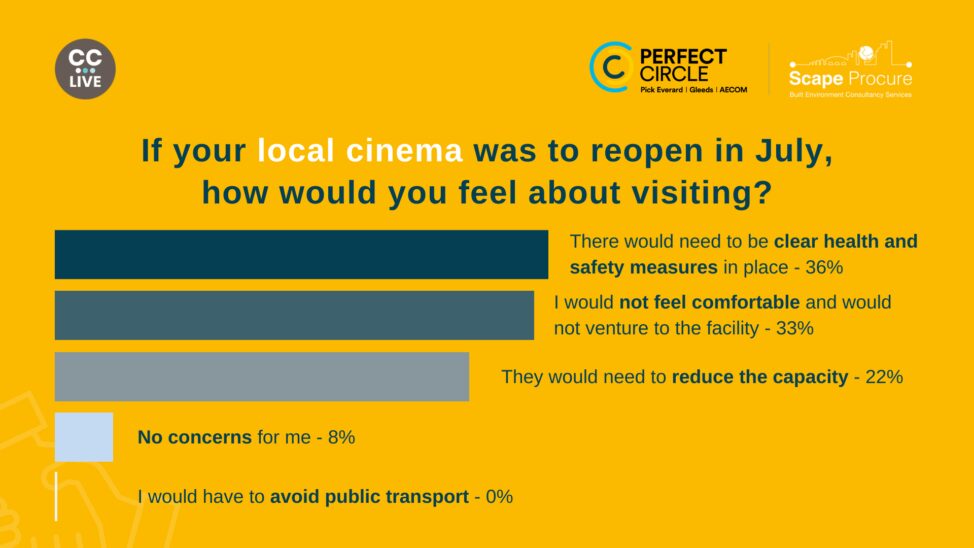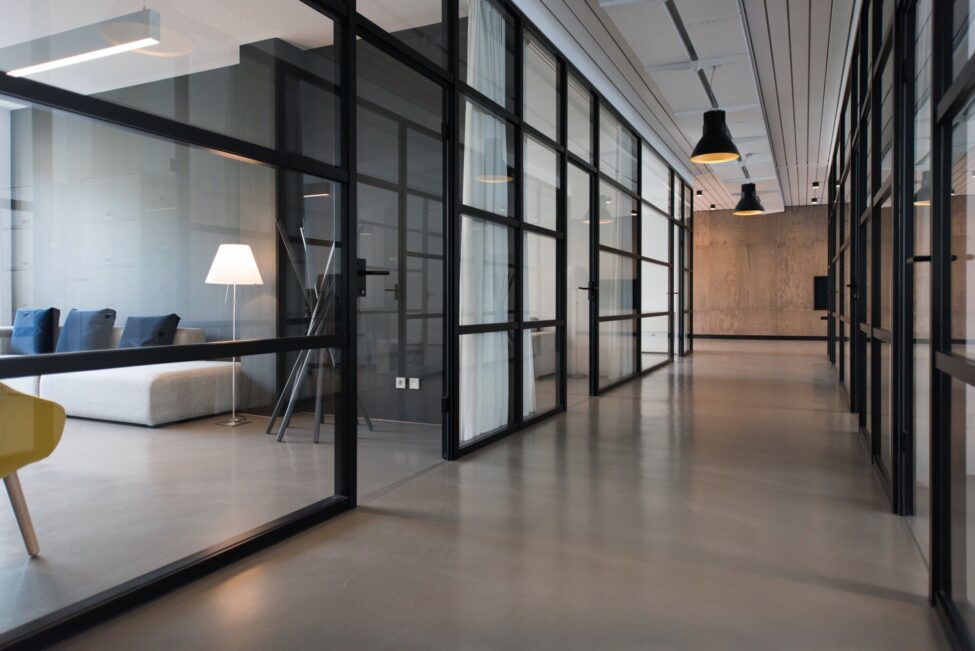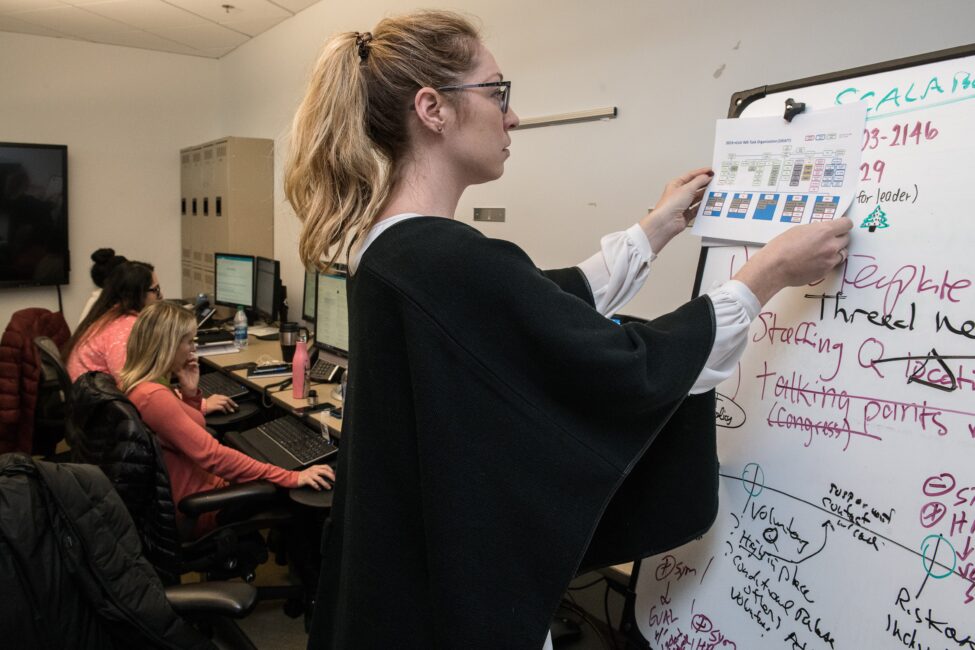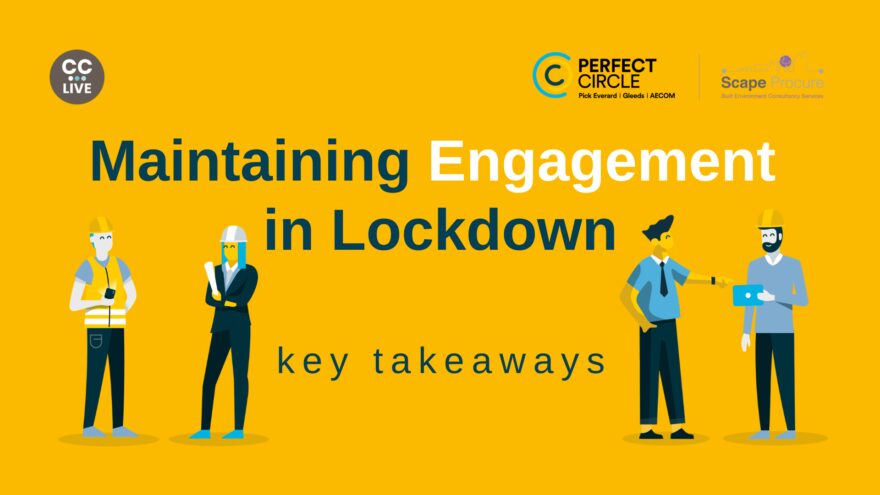Remobilising Public Estates webisode: Key takeaways

Millions of community assets across the country are currently closed in a bid to slow the spread of COVID-19 and protect the most vulnerable in society.
And while it is difficult to predict when services are likely to fully re-open to the public, it is important that local authorities are prepared for a full and compliant reactivation so communities can start to re-build real life connections after a period of isolation.
As part of the new and virtual CC Live series, Perfect Circle discussed how the public sector can effectively remobilise buildings following the period of lockdown and help communities get back the services they rely on.
The virtual event took place on Friday, 29 May and featured conversations with industry leaders, followed by a live Q&A session.

But before the webisode got underway, we asked viewers how comfortable they would feel about returning to their workplace if it was to fully reopen at the beginning of July.
63% of respondents stated there would need to be clear health and safety measures in place, with 15% saying they would not feel comfortable taking that level of risk.
Another 15% stated they would happily return even if new health and safety measures weren’t introduced, and the remaining 7% said they would feel comfortable returning, but only if they could avoid public transport.

We also asked viewers how they would feel about visiting their local cinema if it was to reopen in July.
The majority of respondents (36%) stated that there would need to be clear health and safety measures in place.
33% of people said they wouldn’t feel comfortable and wouldn’t venture to the facility, and 22% said the cinema would need to reduce the capacity.
8% of people said they’d have no concerns and no one said they would have to avoid public transport to get there.
Here, we share the key takeaways from the event. You can also watch the episode in full below.
Our speakers
- Ned Roberts, director for outsourced facilities management at Gleeds, shared his tips for what local authorities should be doing during the lockdown period to ensure reactivation of public buildings can be done efficiently.
- Darren Smith, partner at Knights plc, spoke about the importance of maintaining statutory compliance and how this can be achieved.
- Chris Norton, associate director for outsourced facilities at Gleeds, discussed how the use of office buildings and other workspaces are likely to change post-lockdown.
- Nigel McCarthy, framework development director at Perfect Circle, talked about how the remobilisation of buildings – along with the occupation of buildings – will change in the future.
The process of mothballing and remobilisation
Ned said: “Essentially, mothballing is a prolonged period where a building is unoccupied and the measures you need to take to ensure that building is maintained, safe and compliant. The process of remobilisation is, conversely, ensuring that the building is safe and compliant to reoccupy.
“A challenge that’s facing a lot of building occupiers and owners is that this is uncharted territory.
“If you think of the higher education sector, for example, that is used to shutting down in summer, usually that is for a set period of time and the end point is always known.
“However, the challenge that’s facing us at the moment is that this is somewhat open ended, and the circumstances that we will be coming back to in terms of reoccupying buildings and the way that we work within them will probably be different.”

Bringing portfolios and buildings back to life
Chris said: “There needs to be a very structured plan. In a lot of cases, I think many companies when they went to mothball or if they carried on business as usual, they didn’t perhaps plan for the future and focused on the here and now.
“But in a lot of instances, I think a number of portfolio managers didn’t think ‘what am I going to do next?’ because there was an indeterminable amount of time as to how long this would last.
“So, what people should be doing for reactivation is planning properly, taking a risk-based approach, and determining what the drivers are for the business and who needs to go back. Best practice should also be considered. There’s a lot of great information out in the marketplace in terms of informing people of their decisions.
“Finally, they need to consider what the facilities management situation is going to be like when the building is occupied once more. There will be a backlog of maintenance to deliver and there will probably need to be assets that need to be replaced and a number of aspects that need looking into.
“Once that’s all considered, they need to communicate with stakeholders. People are very uneasy. There’s a lot of discontent and uncertainty, which everybody is experiencing at the moment. So, reassuring stakeholders and building occupiers is a really important thing.
Ned added: “One of the key areas is around statutory compliance and all occupiers need to be ensuring they’re keeping a good record of the activities they are undertaking. Where testing can’t be undertaken, whether that’s because of contractor availability or access to the building, there has to be a very good audit trail of that attempt to complete.”

Common practices
Ned said: “A lot of building occupiers and owners aren’t used to this process and, as such, things were probably rushed and missed.
“One of the common elements of the process is, for example, about the draining down of water in buildings. The standard practice is to drain down those systems and then on remobilisation, flush those systems through. However, a lot of building occupiers may have left those systems life.”
Ensuring compliance is instilled
Darren said: “For the past week, I’ve spent a lot of time working closely with schools that are looking to reopen on 1 June. The key message that we’ve given to the schools is the absolute starting point is the risk assessment process.
“Essentially, the first thing schools have to do is identify who they are going to be interacting with, and that’s a process that has to be done quite quickly.
“I think something a lot of companies will have to look at is a re-training process for all staff who are returning to the new normal, so they know how to practise social distancing in the workplace, for example.
“The key for me is the idea of having a re-induction and making sure it covers everybody. That may mean taking a co-ordinated approach in buildings with multiple occupiers.
“That’s another aspect I’ve learned from working with the schools – so many have contractors and service providers that work with them and it’s important schools speak to them and go through their risk assessments and understand how their process will all interact.
“All you have to do as the law requires is ‘all that’s reasonably practicable’. But you’ve got to be able to show you’ve done that.”

Successfully avoiding civil claims
Darren said: “You have to follow whatever guidance is available per industry and show compliance with that guidance.
“There is no opportunity for generic risk assessments anymore – they have to be specific to a particular business and location. Companies need to show they have taken into account the who, when, where, what and how.
“You have to document everything you’ve been doing and show that, not only was that a live process, but people were actually educated to it.”
Re-engineering to maximise efficiency
Nigel: “We, as employees, have been forced to work from home and forced to use the technology, and our employers have been forced to trust us to do that. That’s opened up a raft of opportunities for businesses to re-evaluate how they deliver products and services to clients.
“There are a lot of organisations out there now looking at the space they’ve occupied in the past and scratching their heads thinking ‘we don’t really need this much space anymore’.
“The opportunities that come from that are greater flexibility in the workforce, greater productivity, and a reduction in overheads.
“Not every business is going to have the opportunity to change its infrastructure. But those that do, need to go back and say ‘why are we doing what we’re doing and how are we doing it’. You can then understand how you can manipulate the space you have to retain in light of the working practices you now want.”

Looking to the future of buildings
Chris said: “Things are going to change. People are realising that the property portfolios they have maybe aren’t the best solution to how a service or product is delivered. So, we could see an amalgamation of working methods – it could be that people realise they can do their job as efficiently, or even more efficiently, without being put into a working environment.
“It may not suit all people, but it may well be a collection of approaches that support a better output.”
Nigel added: “I think there’ll be a lot of changes going on in office spaces right across the whole of the UK as a result of this.
“There are already signs that a lot of organisations that are supposedly committing to taking on new space or having space configured to them saying ‘stop’ to their contractors and designers.”

